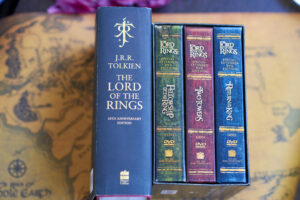You’ve read the article, now watch the webcast
Information is not diluted when delivered in different formats, but rather it’s enhanced.

Movies don’t undermine the books they’re based on; nor do they repeat them.
As Peter Jackson said in 1998, ahead of making his film trilogy* of Lord of the Rings: “The books are masterpieces and always will be. There’s nothing anybody could do on film that could destroy the quality or influence of J.R.R. Tolkien’s writing.”
The truth is that visual and auditory formats are often better suited to conveying certain concepts than written text. One is not better than the other; there’s no need to pick just one format. And utilizing both can enhance the overall message, and drive traffic between them.
When to write
A good article focuses on storytelling – opening with a strong lead and guiding the reader through a succession of ideas. Written pieces can include more context and background. Like books, they contain unspoken information that help the audience engage with the theme and develop a rapport with the ideas.
An article can be read at the reader’s pace. You may wish to savour it, and take time to let the ideas sink in. Or you can scan it to pick out key points. And the number of words used can be adapted to the amount of information you wish to convey. But fundamentally, they are just words (with the occasional still image) on a page; in an increasingly visual world that has its limitations.
When to show
Visual media, on the other hand, is best described as “show don’t tell”. A picture is worth a thousand words, particularly when it comes to demonstrating technology or unpacking a complex process. Much more detailed information can be efficiently conveyed visually than is possible with words on a page.
Video is often a better medium for emotional storytelling. What’s more, a webcast, which is broadcast as live, offers a way to connect with the audience directly, through a moderated Q&A.
Whether a webcast or a film, visual media are constrained in terms of length and speed of viewing. That in turn limits the amount of information they can contain, whether that’s explaining technical options on a new device or, with LOTR, introducing new characters into a story.
The power of seeing and reading
These contrasting strengths mean that stories are enhanced when there is both a written and a visual element. For a start, you will be sure to capture more of your audience, given that some people prefer text while others prefer video.
In more practical terms, if you have a technology you want to show to our audience, and have them ask questions about it, then that’s best done in a webcast. By adding branded content, you can provide readers with the context for that technology, including describing the type of exciting science that it can enable.
Dual media projects don’t aim to repeat each other, but rather to work in harmony. An idea neatly summed up by Sir Ian McKellen, aka Gandalf in LOTR.
“Everything on screen honours Tolkien’s imagination and cinematically matches it.”
Read more about our Webcast and Branded content offerings, or get in touch with our sales team today!
* And for those interested, here’s 20 questions he answered about how the films will differ from the books, asked by die-hard LOTR fans.
